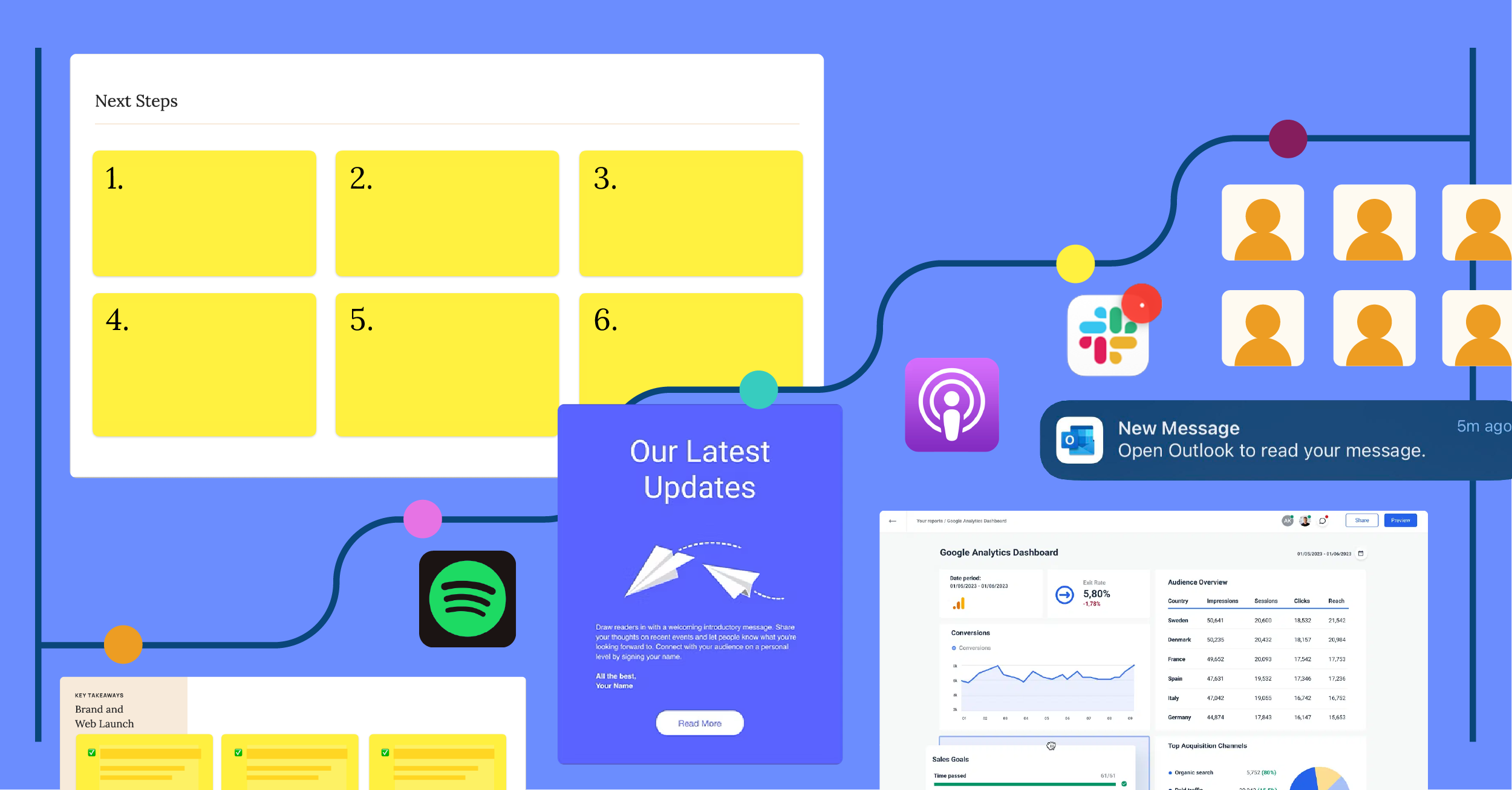It’s the most wonderful time of the year…for strategic planning, that is.
As the leaves change color and Q4 begins, budgets are closing and the annual planning sprint gets underway. The race is on to create those “let’s make 2026 our best year yet” presentations, set ambitious goals, and line up splashy new campaigns.
But the best leaders know that growth isn’t just about doing more—it’s about planning smarter, not harder, by learning from past efforts. Take time to reflect now so that your 2026 game plan builds on what worked and positions you for what’s next. With that in mind, consider this your year-end marketing health check—a quick way to turn reflection into direction and set stronger goals for 2026.
1. Were your goals aligned with your business outcomes?
“The best laid plans oft go awry” is a phrase that has stood the test of time, and the unpredictability we’ve all experienced this year shows that 2025 was no exception. Turbulent times often force B2B teams to pivot quickly—revising priorities or setting new goals on short notice that may fall outside the scope of the original annual plan.
Before putting pen to paper on a plan for 2026, revisit your company’s top-level objectives for 2025. Did product launches proceed and succeed as planned? What did customer retention and/or growth look like compared to your targets? And did marketing efforts deliver measurable pipeline value in these areas or did they primarily generate impressions and engagement?
This reflection aims to gauge how well your marketing stayed aligned with leadership’s evolving priorities. As a marketing team, use this opportunity to reflect and ask:
- Have your CEO’s or board’s priorities shifted this year, and did your campaigns reflect those changes?
- Were your major marketing investments directly tied to business outcomes, or were they based on last year’s assumptions?
- Did your messaging evolve in tandem with the company’s overall strategy?
- Can you clearly connect your top-performing campaigns to the metrics that matter most to leadership?
- When priorities shifted mid-year, did your team pivot or stay the course?
If your answers suggest more lag than alignment, it’s time to recalibrate before building your 2026 strategy.
2. Which channels actually delivered ROI?
Your lookback analysis from step 1 should provide a solid foundation for this question. Audit every channel—organic and paid social, email, SEO, media and public relations, events, account-based marketing, podcasting, and content syndication—and scrutinize performance through multiple lenses. Evaluate factors such as cost-per-lead, lead or conversion quality, influenced revenue, and sales team feedback. Of course, not all success stories are created equal—a channel that brings in fewer but higher-value opportunities may deserve more weight than those filling your CRM with unqualified leads.
As you prepare for the future, keep in mind that proven performers have earned their place in your 2026 plan. However, overreliance on these channels could stifle growth. Make sure you’re allocating budget and creativity for controlled experimentation—whether that means testing emerging platforms, new content formats, or refining targeting strategies. Insights gleaned from steady performers should help guide where to test next, ensuring that each experiment builds on what’s already working.
3. Are you capturing and using data effectively?
Data-driven decision-making works best when marketers have fully “healthy”—clean and connected—systems working efficiently behind the scenes. Evaluate your CRM, lead scoring, and attribution models: are they giving you a clear picture of what’s truly working? If your data isn’t helping you identify what’s next or where to focus, it’s a sign your systems need a tune-up.
When the predictive data trinity—engagement (interactions such as multiple contacts from the same company visiting specific pages on your website), firmographic (company attributes that fit your ideal customer profile), and intent (third-party and first-party data showing when accounts are actively researching solutions like yours)—is in top shape, marketers can combine these signals to spot opportunities earlier.
For example, you might identify a midmarket healthcare company that recently secured Series B funding (firmographic), has multiple contacts engaging with your webinar series (engagement), and is actively researching topics related to patient financing solutions (intent). Together, these signals point to a high-priority account that is likely moving toward a buying decision.
4. How strong is your brand consistency and content relevance?
If the test results above weren’t what you expected, it might be time for a brand wellness check. Does your brand appear consistently—from your website to your sales decks—or are there varying interpretations? Are your brand and thought leadership voices clear and strong across every touchpoint, or have they lost a little muscle? A healthy brand doesn’t just look good; it performs better. Strengthen your brand now to make it more resilient for the year ahead.
5. Are your teams and tools set up to scale?
Great marketing depends on good chemistry between people and the platforms they use. Take a pulse on team health: Are workflows smooth and roles clear? Is automation pulling its weight? Is bandwidth stretched thin? Do some tools feel like they’re creating more friction than traction? If your teams and tools are out of sync, invest time now to optimize and unlock greater scalability moving forward.
Make 2026 Your Most Strategic Year Yet
The diagnosis is clear—a little preventive care now beats emergency fixes down the road. By taking stock of your goals, channels, data, brand, and team health before starting the annual planning sprint, you’re setting yourself up for a marketing plan that’s built to last. Let’s make your 2026 strategy intentional, not accidental. Connect with Hencove to evaluate your marketing performance and uncover opportunities for smarter growth. Here’s to entering 2026 with a clean bill of (brand) health.



